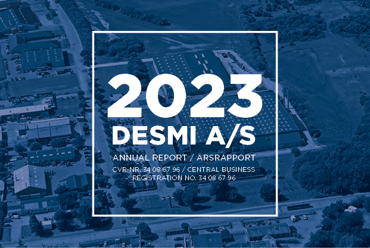
May 2024

April 2019
DESMI Ocean Guard A/S is pleased to announce that its CompactClean Ballast Water Management System (BWMS) has received US Coast Guard Type Approval. This approval comes just a few months after the CompactClean BWMS received IMO type approval and means that the system is now approved for worldwide operation.
On April 16, 2019 DESMI Ocean Guard’s CompactClean Ballast Water Management System (BWMS) received US Coast Guard (USCG) Type Approval. The approval is valid for all salinities and sea water temperatures, and has no requirement for a special operating mode in US Territory. In fact, the stringent US requirements are met everywhere in the World by running the system in its normal mode. This means the system is fully approved and certified for discharge of ballast water anywhere in the world, no matter if it is fresh water, brackish water, marine water, cold water or warm water. Rasmus Folsø, CEO of DESMI Ocean Guard A/S explains:
“It is a significant achievement that the CompactClean system does not need a special US operation mode to meet the USCG requirements in US territory. With just one operation mode used globally, there is no need for knowing the de-ballast location at the time of ballast uptake, in order to determine if the BWMS should be operated in IMO or US mode. Likewise, there are no issues related to mixing IMO and USCG treated ballast water when water is treated in one mode during ballast operation, but then pumped to a tank with remains of water treated in another mode. Mixing of ballast water treated in different modes is also a concern when water is moved internally from tank to tank during a voyage to compensate for consumed fuel. All of these issues represent serious complications to the ship operator when using BWMS that must be switched to one operation mode in US and another in the rest of the world (IMO). With CompactClean we have managed to solve this. Furthermore, we have managed to keep the power consumption at a minimum by incorporating automatic dimming of UV lamps when the water conditions permit.”
The USCG Type Approval includes a requirement for a minimum holding time between ballast and de-ballast operations of 24 hours. This is already significantly better than many competing systems, but in order to meet any customers requirement, additional testing has recently been performed in order to demonstrate that the minimum holding time requirement can be reduced to close to zero hours. Tests were successful and we expect an amended USCG Type Approval certificate with a close to zero holding time requirement will be issued in the near future. The IMO Type Approval certificate is already without any minimum holding time requirement.
Furthermore, the CompactClean BWMS has recently been approved according to ATEX and IECEx requirements for installation in hazardous zones on e.g. oil and chemical tankers, and this is also expected to be added to both IMO and USCG Type Approval certificates soon.
“With the so far unmatched versatility of the CompactClean BWMS enabling installation onboard any ship type and allowing for treatment of all kinds of ballast water anywhere in the world, with a zero or close to zero hold time restriction, the CompactClean BWMS is leading the way. Add to this the smallest footprint in the industry, simplicity, user friendliness, ease of installation and credible long term global support and service from a company with close to two centuries of history, and you have the explanation why CompactClean is being selected by more and more,” explains Rasmus Folsø. He continues: “Some of the World’s largest and leading shipowners have found the CompactClean BWMS the superior solution, and selected it for their entire fleet. We are grateful for their trust in our product and our company, and we are happy to see that as systems are installed and put into operation on more and more vessels, we receive positive feedback from involved shipowners.”
The CompactClean BWMS comes in 14 different flowrate sizes, with the smallest having a maximum flowrate of 35 m3/h, and the largest having a maximum flowrate of 3000 m3/h. The largest UV Unit boasts an impressive 1500 m3/h max capacity, and by combining two of these in parallel the 3000 m3/h flowrate is achieved. As reported by other UV makers in the market we also see a growing market for these large flowrate UV systems, because shipowners value the simplicity, ease of installation, ease of operation, low operating expenses and chemical free operation offered by UV technology.

The system consists of an automatic backflushing filter, a UV unit, valves, sensors, and controls. Furthermore, the system includes many features that are of importance to the daily operation. One example is automatic generation of PDF reports that document all the performed ballast water treatment operations, in a format that is suitable for submission to local port authorities and others. Another example is that the system includes a pump that can be used as stripping pump under ballast stripping operations, thus solving one of the main problems for ballast water management system installations today.
As a closing remark Rasmus Folsø adds: “In addition to the CompactClean BWMS DESMI Ocean Guard also provide the market’s most energy-efficient IMO approved BWMS. This system, called RayClean, can in some cases still be the optimal solution if available electrical power is a limiting factor and available space is less of an issue.”

May 2024

February 2024

February 2024

August 2023